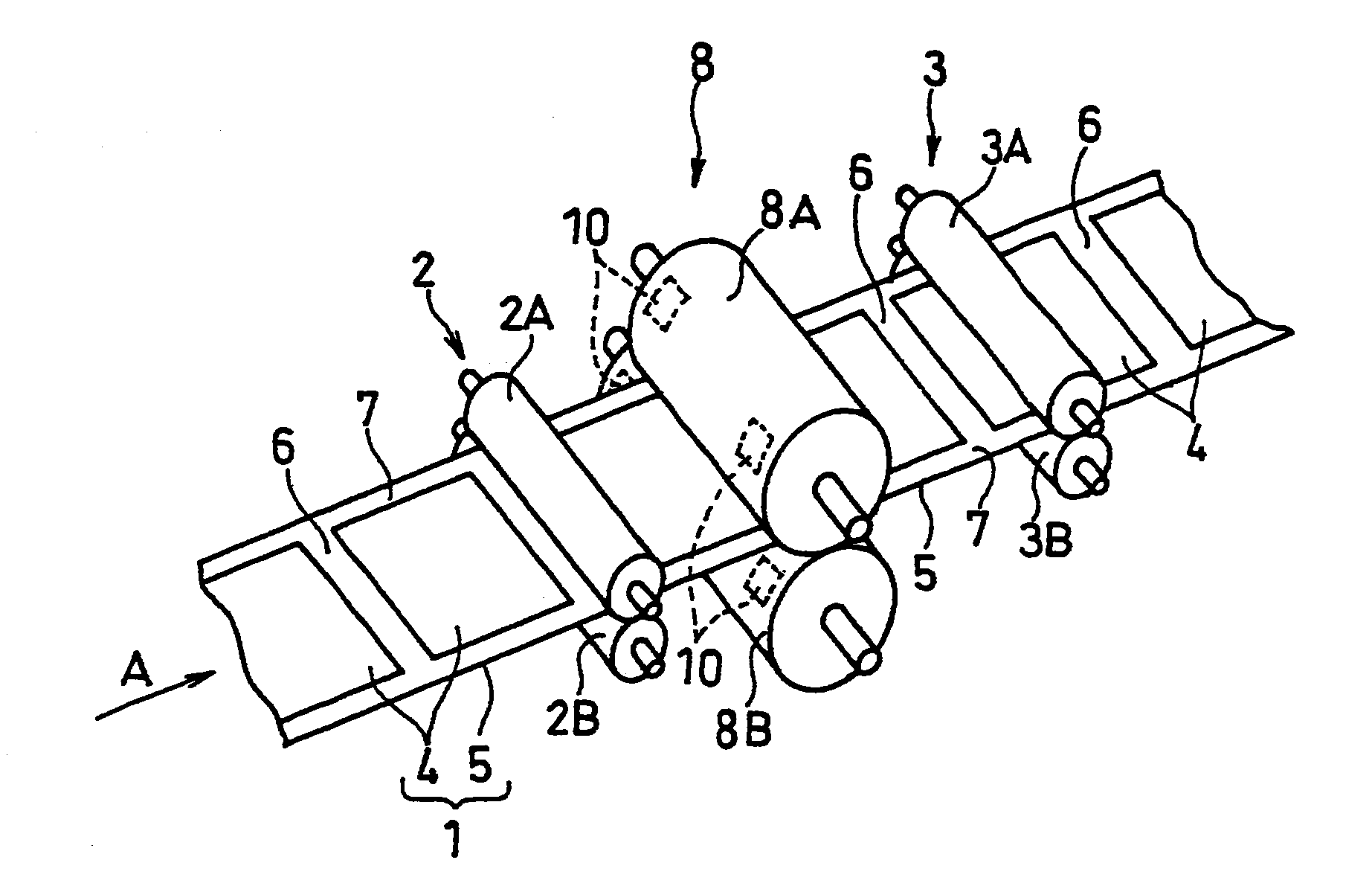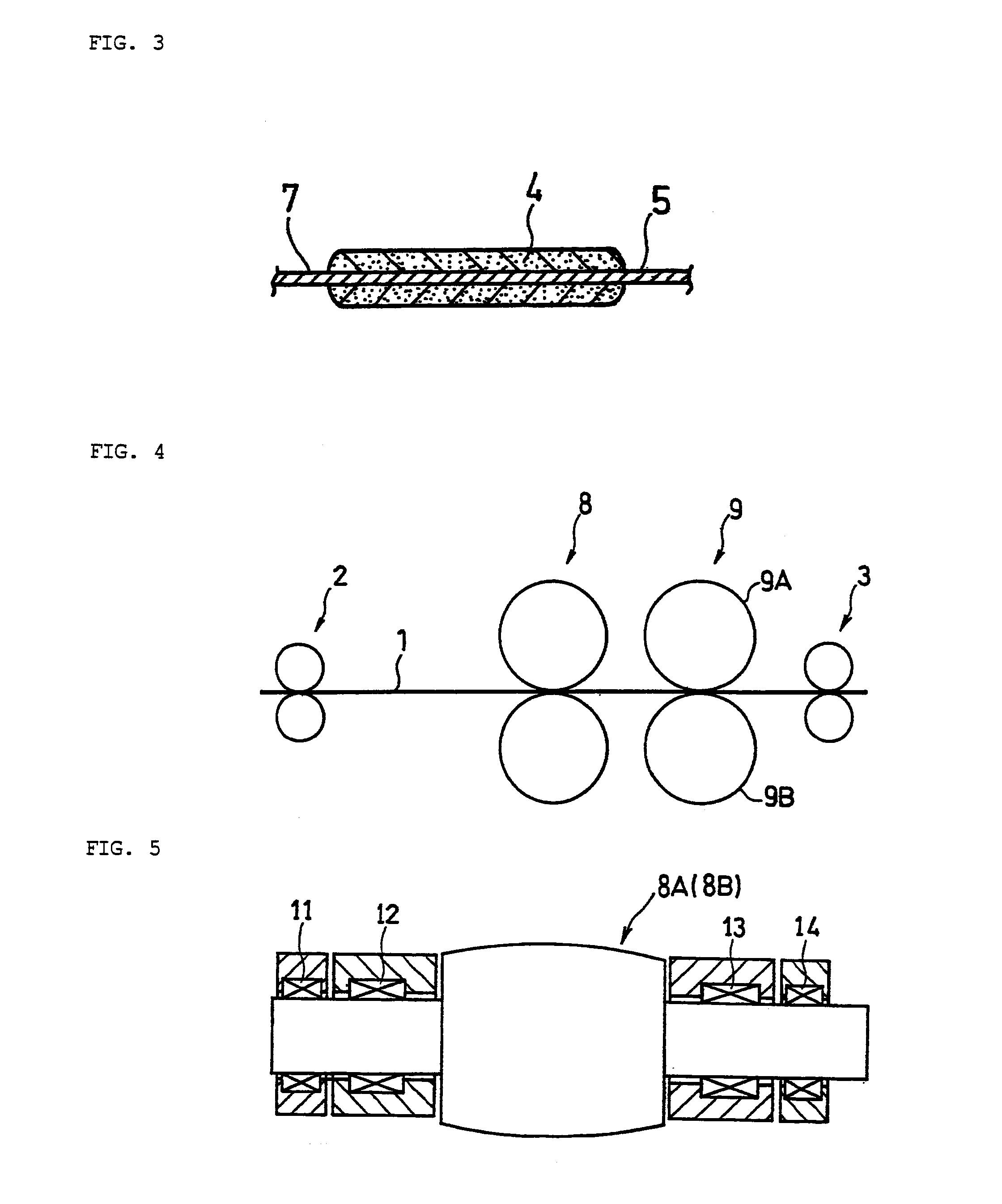Method for producing electrode plate for battery
a battery and electrode plate technology, applied in the direction of liquid surface applicators, cell components, coatings, etc., can solve the problems of reducing affecting the accuracy of application positions, and affecting the quality of battery electrode plates, so as to reduce the number of steps, improve the efficiency of electrode plate production, and reduce material losses
- Summary
- Abstract
- Description
- Claims
- Application Information
AI Technical Summary
Benefits of technology
Problems solved by technology
Method used
Image
Examples
examples
[0080]Next, the present invention is more specifically described based on Examples and Comparative Examples. It should be noted that the present invention is not limited to these.
examples 5 to 8
[0098]Using the same material as that in Examples 1 to 4, four types of the first electrode plate precursors 1 were prepared, being provided with the first non-application portions 7 having widths of 2 mm (Example 5), 4 mm (Example 6), 6 mm (Example 7) and 8 mm (Example 8), respectively. Using the rolling apparatus shown in FIG. 1, the first electrode plate precursor 1 having a total thickness of 270 μm was rolled with the rollers 8 so that the total thickness became 210 μm. The rolling rate in this rolling process alone was 23.5%. The first electrode plate precursor 1 that had been wound by a winding reel (not shown) after having been rolled was rolled until the total thickness became 190 μm using the rolling apparatus shown in FIG. 1 again, while unwinding it from the reel with the front and back thereof being reversed. The rolling rate in this rolling process alone was 10.3%. Other than this, a positive electrode plate was produced in the same manner as in Examples 1 to 4. At thi...
examples 9 to 12
[0102]As shown in FIG. 4, in Examples 9 to 12, a rolling apparatus was used in which downstream pressure rollers 9 constituted by a pair of rollers 9A and 9B have been added and arranged at a position that is downstream of the pressure rollers 8 and upstream of the rear tension rollers 3 of the apparatus shown in FIG. 1. Here, crown rollers (see FIG. 5) were used for the rollers 9A and 9B of the downstream pressure rollers 9.
[0103]Using the same material as that in Examples 1 to 4, four types of the first electrode plate precursors 1 having a total thickness of 270 μm were prepared, being provided with the first non-application portions 7 having widths of 2 mm (Example 9), 4 mm (Example 10), 6 mm (Example 11), and 8 mm (Example 12), respectively. Using the rolling apparatus described above, the first electrode plate precursors 1 were rolled with the pressure rollers 8 until the total thickness thereof became 210 μm (the rolling rate was 23.5%), and thereafter rolled with the downstr...
PUM
| Property | Measurement | Unit |
|---|---|---|
| width | aaaaa | aaaaa |
| width | aaaaa | aaaaa |
| width | aaaaa | aaaaa |
Abstract
Description
Claims
Application Information
 Login to View More
Login to View More - R&D
- Intellectual Property
- Life Sciences
- Materials
- Tech Scout
- Unparalleled Data Quality
- Higher Quality Content
- 60% Fewer Hallucinations
Browse by: Latest US Patents, China's latest patents, Technical Efficacy Thesaurus, Application Domain, Technology Topic, Popular Technical Reports.
© 2025 PatSnap. All rights reserved.Legal|Privacy policy|Modern Slavery Act Transparency Statement|Sitemap|About US| Contact US: help@patsnap.com



